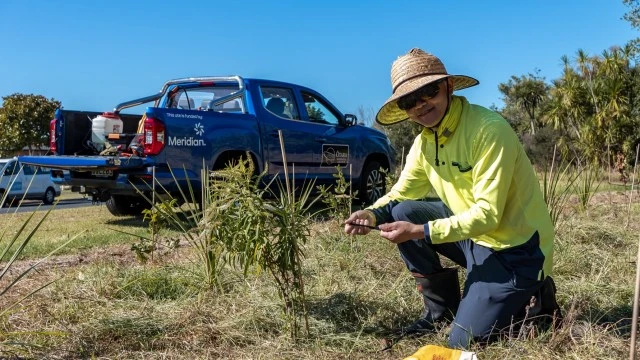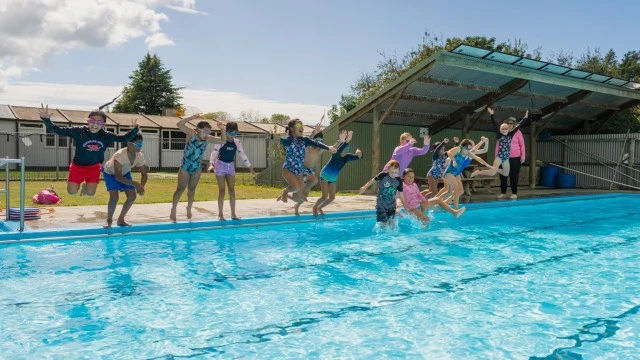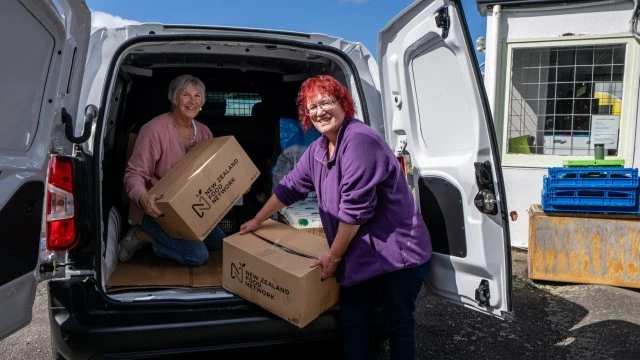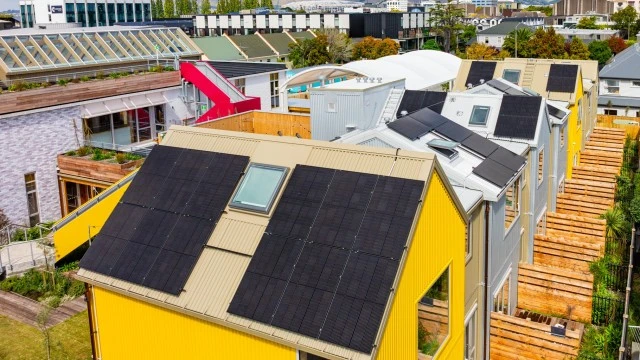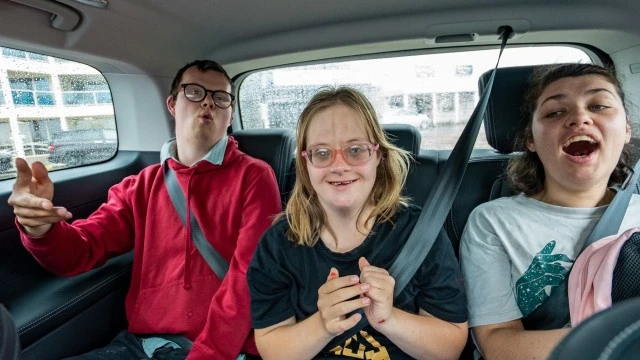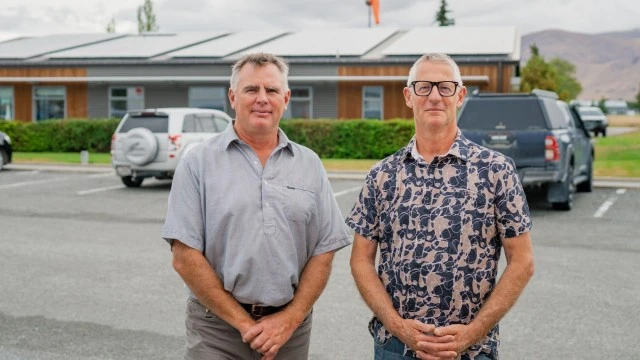Soft, melodic music plays. The video opens with recorded bat monitoring footage. We see bats in their roost and hear them chirping at one another, then a new one flies in and meets the others.
See Neil Henderson, Community Activator for Kaipātiki Project, standing in front of a lush, green forest with tall trees in the background. There are also shots of a map with highlighted routes across Auckland’s Northwest.
Neil Henderson: “Bats are almost extinct and it would be a shame for us to lose them. We are looking at bats at the moment throughout Auckland's Northwest from Waitākere, right through to Taupaki, Kumeū, and ultimately we want bats to come out here to Kaipātiki.”
See Neil Henderson and other Kaipātiki staff walking through a grassy field and into a lush, green forest. Mist hangs low over the trees, and the camera slowly pans across the scene, revealing dense foliage and tall native trees. Birds chirp in the distance. The lighting is soft and natural, with sunlight filtering through the leaves.
Neil Henderson: “These are great distances that we're traveling through when we go out and put the bat recorders and I was realizing that we were spending an awful lot of money not only on transport to get to these places, but sometimes if you really want to know that your recorder's going to be out for a solid month, we'd have to use single use batteries. And that's why I inquired to Meridian to see whether they would be looking into a potential solar project with the bat recorders.”
See the three staff members walk up to a solar-powered bat monitoring device installed on a tall free in the forest. They talk to one another and look at the tracker. Neil opens the box of the monitoring device and shows the settings inside, he pushes a few buttons to change some settings.
Neil Henderson: “Every time a bat comes past, it will tell us what time. During the night, and it also tells us what kind of calls the bat's making.”
See a computer screen showing an audio recording of bats that was collected using the solar-powered monitoring devices. See Neil sitting at his computer showing the recording. The camera cuts to brief glimpses of bats flying at dusk, silhouetted against the sky. The background is a deepening blue as night falls.
Neil Henderson: “So they're flying into land. So these are what we call a complex social call.”
Cut to the three staff members standing in the forest and setting up the microphone for the bat recording device, pointing to the device and its components. The video cuts to drone footage of the lush green foliage and treetops of the forest below. The river is calm, with overhanging trees and the last light of day reflecting on the water.
Neil Henderson: “Over here's the microphone, which we set up. And we want to be able to set it up to record bats moving through an area. Like they love to come down through a river.”
See recorded bat monitoring footage with bats in their roost and chirping at one another.
Neil Henderson: So, for bats coming through right after dark, or it's leaving the site just around dawn. Then we've got a good chance that the bat's living nearby. And that's really important information because then we might be able to find where it's roosting and that's the place that we're always looking to try and find and protect.”
See the Kaipātiki Project logo on the outside of the Eco-Hub building. See Blanka Ros, Communications and Engagement Lead for Kaipātiki Project, talking to camera outside the building.
Blanka Ros: “So Kaipātiki Project has been around for over 26 years and we work with over 2000 volunteers every year.”
A montage of volunteers working together: planting trees, examining equipment and talking in small groups. The setting outdoors in the facility’s native plant garden with a focus on teamwork and community. There are shots of people of different ages and backgrounds, all engaged in conservation work.
Blanka Ros: “We work with lots of different community groups, we work with local residents and we also collaborate regionally as well as nationwide to make sure the nature and people are thriving.”
See drone footage about the Eco-Hub with hundreds of native plants in small pots to grow. See Athena Behm, internship student at Kaipātiki Project, standing in front of the native plant garden.
Athena Behm: “A lot of things in the field you don't learn in the classroom, which I find is really helpful. The staff here very knowledgeable, so I've learned a lot about plants. I've learned a lot about birds and bats, which I wouldn't have learned within PowerPoints.”
See Athena, Neil and another staff member walking around the native plant garden, examining the species and talking.
Neil Henderson: “A lot of the bat work previously has been done in the South Island right down by Fiordland and the bats go to sleep down there in the wintertime, it's so cold and there was a natural assumption that that's what happened with bats all through New Zealand.”
See a sign saying ‘Fiordland National Park’ with close-ups of local native trees, forest foliage and plant leaves at dusk, with birds and bats chirping.
See Neil walking into the forest with bat recording equipment. The video cuts to drone footage of the lush green foliage and treetops of the forest below.
Neil Henderson: “We've found that our local bats, they're out and about all through the year, and I get just as much bad activity in the middle of winter, as in the middle of summer. So, it's a whole different story with bats and we want to be able to tell that story.
See the Meridian logo appear on screen and the soft, melodic music fades out.
